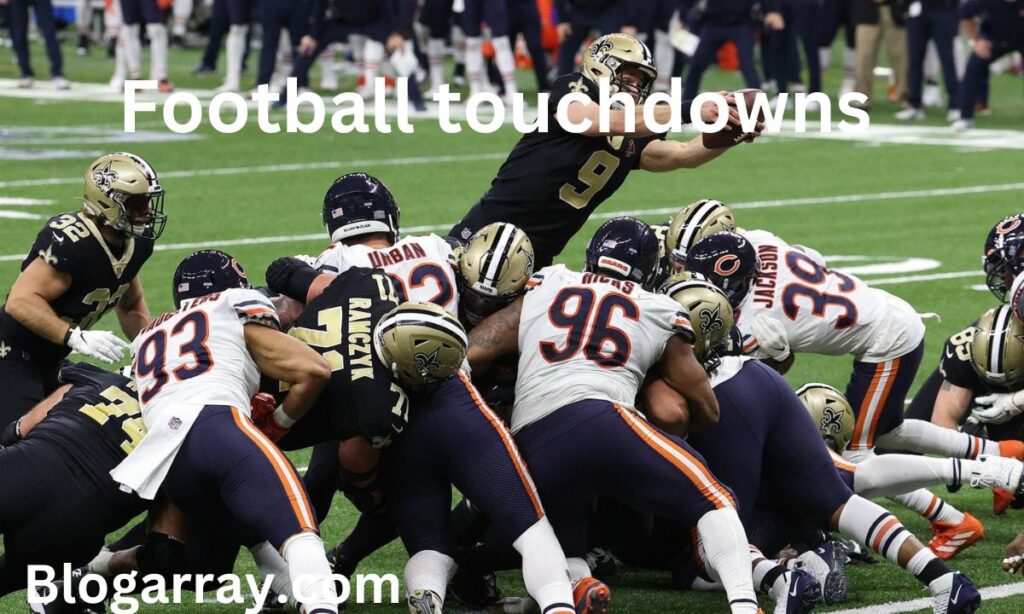Understanding the Post-Football Touchdowns Attempt:
In the fast-paced and strategic game of football, every play counts, but some moments carry more weight than others. One such crucial moment is the post-football touchdown attempt. This seemingly small part of the game can have a significant impact on the final score, making it an area of intense focus for both players and coaches. Understanding what happens during this attempt, and the strategies involved, can offer a deeper appreciation for the intricacies of football.
The Importance of a Post-Football Touchdown Attempt
The post-touchdown attempt is a critical opportunity for a team to add extra points to their score after successfully crossing into the end zone. While a touchdown itself is worth six points, what follows can contribute an additional one or two points, potentially altering the outcome of the game. The importance of this play cannot be overstated, as it often becomes a deciding factor in close matches.
Types of Post-Football Touchdown Attempts
In football, there are two main types of post-touchdown attempts: the extra point (also known as the point after touchdown, or PAT) and the two-point conversion. Each comes with its own set of rules, risks, and potential rewards.
The Extra Point (PAT)
The extra point attempt is the more traditional and frequently chosen option after scoring a touchdown. It involves kicking the football through the opponent’s goalposts from the 15-yard line. If successful, this kick adds one point to the team’s score. Despite its apparent simplicity, the extra point is not guaranteed and can be blocked or missed, which makes it a critical moment that requires precision and calm under pressure.
The Two-Point Conversion
For teams looking to maximize their scoring potential or when an extra point might not be enough, the two-point conversion is an alternative strategy. Instead of kicking the ball, the team attempts to run or pass the ball into the end zone from the two-yard line. Successfully completing this play adds two points to the scoreboard. However, the risk is higher compared to the extra point, as the defense is fully prepared to stop the attempt.
Strategic Considerations in Post Touchdown Attempts
The decision on whether to go for one or two points after a touchdown is influenced by several factors. Coaches must weigh the current score, the time left in the game, the strength of their offense versus the opponent’s defense, and even weather conditions.
Situational Awareness
One of the key elements that dictate the choice of a post-touchdown attempt is situational awareness. For instance, if a team is trailing by a significant margin and needs to catch up quickly, opting for a two-point conversion could be a smart move. Conversely, in a close game, securing the extra point with a PAT might be the safer bet to ensure a steady lead.
Team Strengths and Weaknesses
A team’s strengths and weaknesses also play a crucial role in this decision. Teams with a strong, reliable kicker are more likely to opt for the PAT, while those with a dynamic and unpredictable offense might prefer to attempt the two-point conversion. The defensive strategy of the opposing team must also be considered, as some defenses excel at stopping conversion attempts.
Execution and Pressure in Post-Football Touchdown
Attempts
The execution of a post-touchdown attempt, whether it’s a kick or a run/pass play, is often a high-pressure situation. Players must remain focused, and even the smallest mistake can result in a missed opportunity.
Kicker’s Role in the PAT
For the kicker, the extra point might seem routine, but the pressure is immense. The kick must be accurate and powerful enough to clear the goalposts, all while dealing with potential obstacles such as wind, rain, or the looming threat of a block. The snap, hold, and kick must be perfectly synchronized, making teamwork and practice essential.
Offensive Coordination in Two-Point Conversions
In a two-point conversion, the offense must work together seamlessly. The quarterback’s decision-making, the offensive line’s protection, and the skill players’ execution all need to align perfectly. The defense knows exactly what’s coming, so the offense must be both creative and precise to succeed.
Historical Impact of Post Touchdown Attempts
Throughout football history, post-touchdown attempts have been the focal point of many dramatic moments. Some of the most memorable games have been decided by a single point, emphasizing the critical nature of these attempts.
Famous Post Touchdown Moments
There have been numerous instances where a post-touchdown attempt either secured a victory or led to a heart-wrenching loss. For example, in the 2015 NFL season, the New Orleans Saints were involved in a game where a blocked extra point by the Denver Broncos led to a game-winning two-point conversion. Moments like these highlight the unpredictability and excitement that post-touchdown attempts bring to the game.
Psychological Aspects of the Post-Football Touchdown Attempt
The mental game during a post-touchdown attempt is as crucial as the physical execution. Players and coaches must manage their nerves, make quick decisions, and maintain composure in high-stakes situations.
Pressure on the Kicker
Kickers often face immense pressure during the PAT, as they are expected to deliver in a situation where the outcome seems almost guaranteed. However, the fear of failure can lead to missed kicks, making mental toughness a vital attribute for any successful kicker.
Coaching Decisions and Psychological Warfare
Coaches, too, play a mental game, not just with their own team but with the opposition. Deciding to go for two points can be a psychological tactic, aiming to demoralize the opponent or create uncertainty. Understanding the psychological dynamics at play can give a team an edge in these critical moments.
The Evolution of Post-Football Touchdown Attempts
Over the years, the rules and strategies surrounding post-touchdown attempts have evolved, reflecting changes in the game and the increasing emphasis on maximizing scoring opportunities.
Rule Changes and Their Impact
In 2015, the NFL moved the extra point attempt back to the 15-yard line, making it a 33-yard kick instead of a 20-yard one. This change increased the difficulty of the PAT and led to more teams considering the two-point conversion as a viable option. The strategic implications of this rule change continue to influence how teams approach post-touchdown situations.
The Future of Post-Football Touchdown Attempts
As football continues to evolve, so too will the strategies and rules governing post-touchdown attempts. With advancements in training, technology, and analytics, teams are likely to develop even more sophisticated approaches to these critical plays.
Analytics and Decision-Making
The rise of data analytics in sports is likely to play an increasingly significant role in decision-making processes. Teams now have access to detailed data on the success rates of different types of post-touchdown attempts under various conditions, enabling more informed and strategic decisions.
Conclusion: The Crucial Role of the Post-Football Touchdown Attempt in Football
The post-touchdown attempt is far more than just an afterthought following the excitement of a touchdown. It’s a critical aspect of the game that requires careful planning, precise execution, and mental fortitude. Whether it’s a straightforward PAT or a high-risk two-point conversion, the decisions made in these moments can change the course of a game, highlighting the importance of understanding and mastering this vital aspect of football.
Also Read: Exploring the History of the Sousaphone
FAQs
What is the difference between a PAT and a two-point conversion?
A PAT, or point after touchdown, is a one-point kick attempt following a touchdown, while a two-point conversion is an attempt to run or pass the ball into the end zone for two points.
Why might a team choose to go for a two-point conversion?
A team might opt for a two-point conversion to increase their score by two points instead of one, particularly if they need more points to catch up or take a lead.
How often do teams successfully convert two-point attempts?
Success rates for two-point conversions vary, but generally, they are successful around 40-50% of the time, making them riskier than the PAT.
Has the success rate of PATs changed since the rule change in 2015?
Yes, moving the PAT back to the 15-yard line has reduced the success rate slightly, as it turned the PAT into a more challenging 33-yard kick.
What factors influence the decision to attempt a two-point conversion?
Factors include the current score, the remaining time in the game, the team’s offensive strengths, and the opponent’s defensive capabilities.
Can a defensive team score during a post-touchdown attempt?
Yes, if the defensive team intercepts a pass or recovers a fumble during a two-point conversion attempt and returns it to the opposite end zone, they can score two points.












